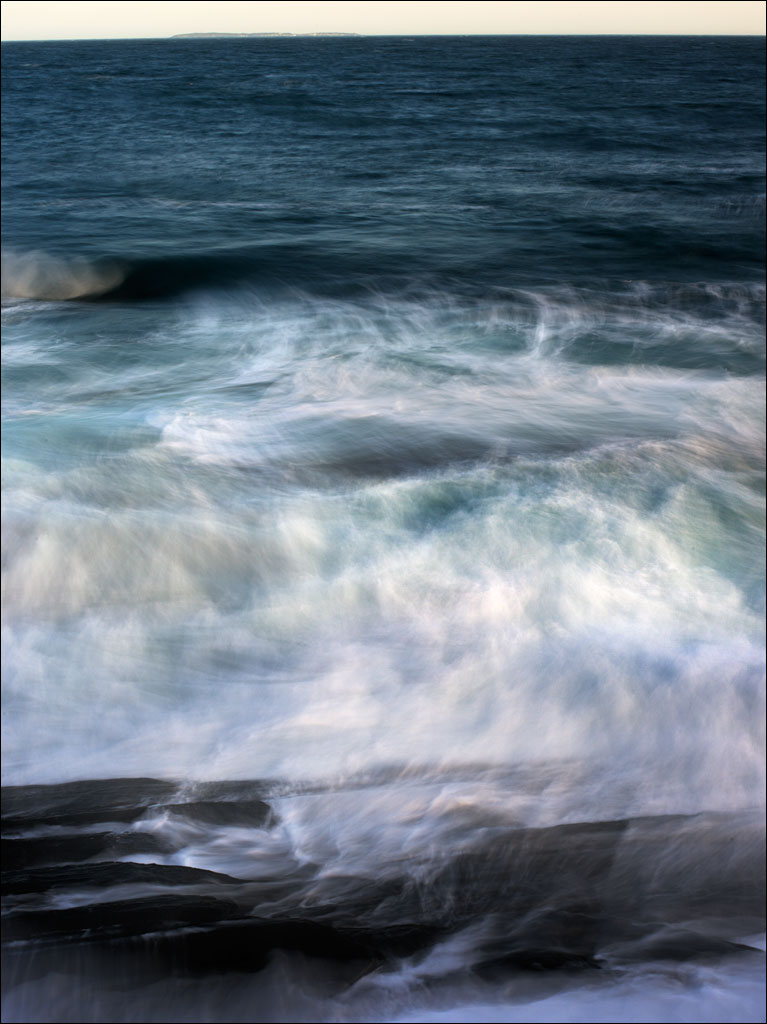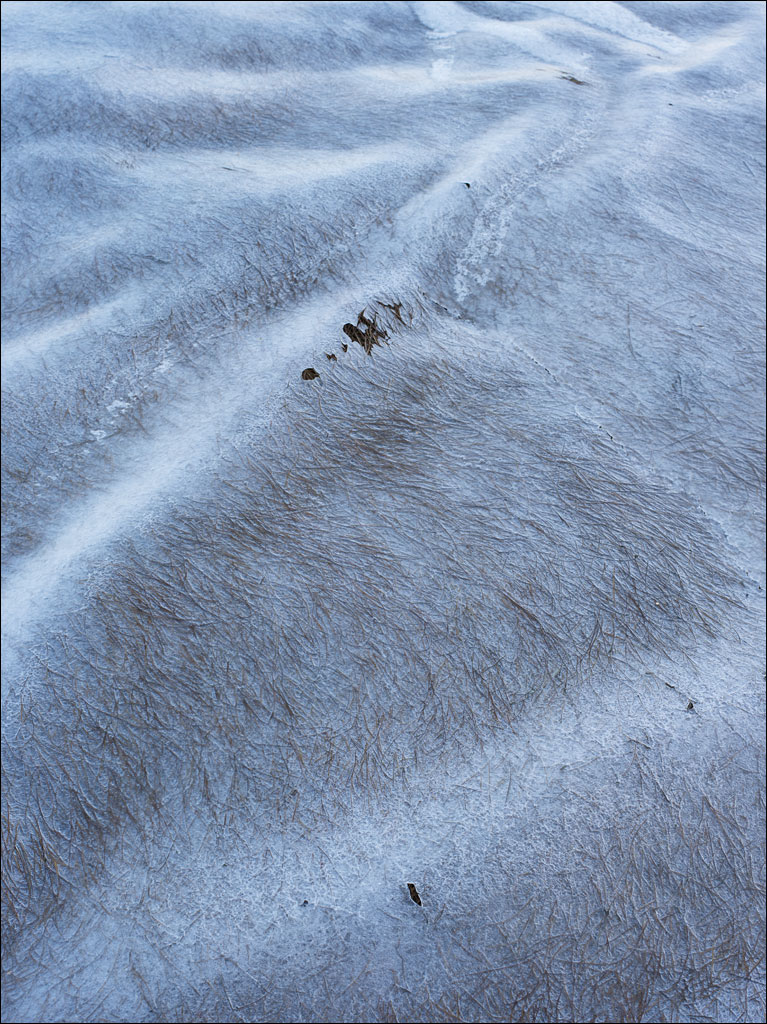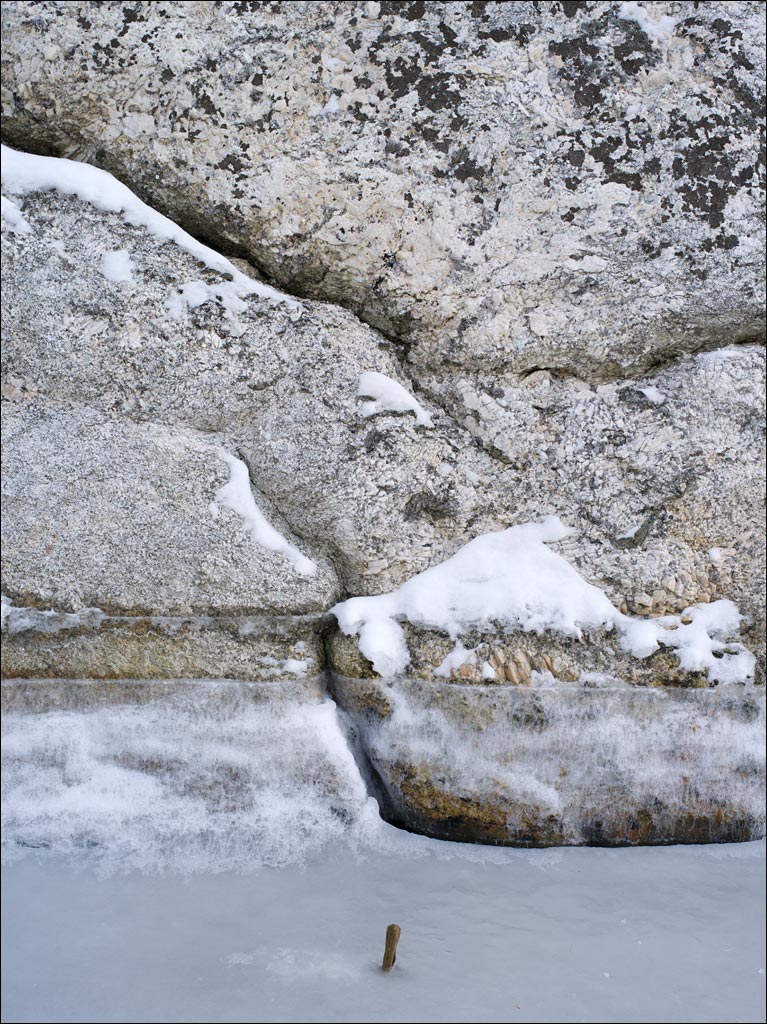 With temperatures climbing above freezing and a rare sunny day, Naomi and I went to Pemaquid Point this weekend. While the weather was mild, the ocean swells were dynamic. Monhegan Island can be seen on the horizon. Click on the image for a larger view.
With temperatures climbing above freezing and a rare sunny day, Naomi and I went to Pemaquid Point this weekend. While the weather was mild, the ocean swells were dynamic. Monhegan Island can be seen on the horizon. Click on the image for a larger view.
Tag Archives: Winter in Maine
Winter Woods
 We had two storms in succession, on Thursday and Saturday, with another predicted for next week. Our woods are very peaceful this time of year. The drifting snow makes walking tricky as it is hard to predict whether the snow pack is a few inches deep or a few feet deep. A few of the animals that live here leave the occasion tracks, but many travel under the snow in a network of tunnels.
We had two storms in succession, on Thursday and Saturday, with another predicted for next week. Our woods are very peaceful this time of year. The drifting snow makes walking tricky as it is hard to predict whether the snow pack is a few inches deep or a few feet deep. A few of the animals that live here leave the occasion tracks, but many travel under the snow in a network of tunnels.
Our Winter Chickadees
 The black-capped Chickadee, Parus atricaillus, is found though out the Northern US from Alaska to Maine. It is the Maine State bird—you see the image of these amazing animals on the our car license plates. They get their name from their call: chick-a-dee-dee-dee. A tame and inquisitive bird, they can get very protective of their garden and are quite vocal when they think you should not be there.
The black-capped Chickadee, Parus atricaillus, is found though out the Northern US from Alaska to Maine. It is the Maine State bird—you see the image of these amazing animals on the our car license plates. They get their name from their call: chick-a-dee-dee-dee. A tame and inquisitive bird, they can get very protective of their garden and are quite vocal when they think you should not be there.
A Chickadee is about 4.75–5.75 in. (12–15 cm) in length, and 0.35–0.42 oz. (10–12 grams) in weight. These birds spend the entire year in Maine, including the winter. To survive the cold, the Chickadee needs to feed during the day to gain fat to use through the night for energy. But with very precious fat reserves, they drop their body temperature by 17°F–21°F (10°C–12°C) to conserve that energy while they sleep. Their plumage is also a far more efficient insulator than on many birds their size. Chickadees do not build winter shelters, but find small places to roost overnight—their tails can appear bent from spending the night in a cramped spot. Naturally, our (their?) bird feeders are never without a Chickadee this time of year.
Winter Salt Marsh
 Salt marshes are amazing places. Some of the toughest environments exist right between the land and the sea. Places where extreme changes in salinity, temperatures, and water level can be a daily event. This marsh is on the eastern edge of the Bates-Morse Mountain Conservation Area along the Morse River. Click on the image for a larger view.
Salt marshes are amazing places. Some of the toughest environments exist right between the land and the sea. Places where extreme changes in salinity, temperatures, and water level can be a daily event. This marsh is on the eastern edge of the Bates-Morse Mountain Conservation Area along the Morse River. Click on the image for a larger view.
Winter Blues
 Winter blues, or cabin fever, is a common ailment in Maine. The short days slowly take their toll. This year has been especially hard as the weather has kept us indoors. And the seed catalogs, which start appearing in our mail box this time of year, have been teasing us with the promise of a spring that is months away.
Winter blues, or cabin fever, is a common ailment in Maine. The short days slowly take their toll. This year has been especially hard as the weather has kept us indoors. And the seed catalogs, which start appearing in our mail box this time of year, have been teasing us with the promise of a spring that is months away.





